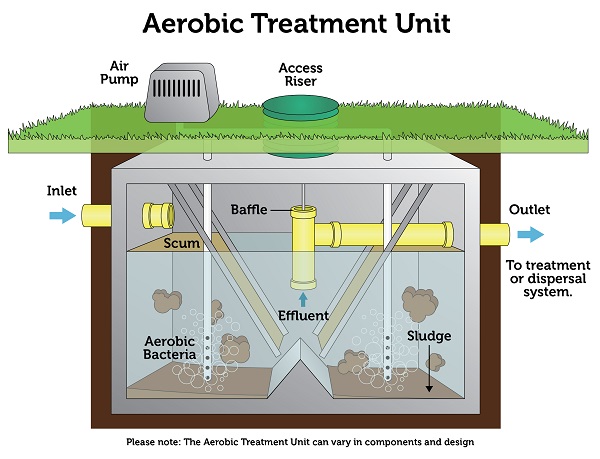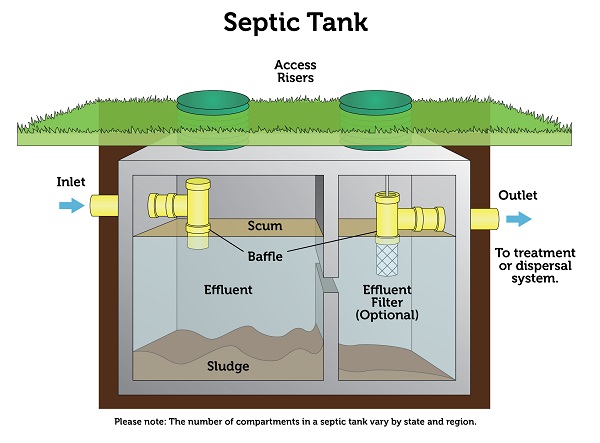Rural residents are usually not connected to the municipal sewage system. In order to clean your waste and dispose it correctly you'll require a water system for your home. There are a variety of home septic tanks but all do the same similar thing. They eliminate waste from homes and then filter out undesirable substances. They also release pure water to surface waters. The cost of a home septic tank is contingent on the size and capacity. A larger model will be more efficient at reducing the number of chores required each day, as less liquid is generated than a smaller one.
What Is The Cost Of A System Of Septic Tanks Cost?
The traditional septic tanks are an old system that's not working as well anymore. It can cost between $2,500 to 5K in the United States before factoring permits for installation, not even piping your drain field or soil testing requirements! If cost isn't your primary concern, you need to think about various types of anaerobic and aerobic septic systems. Another option is to buy one of these "septic systems" which are brand new devices. Although they can be expensive however they're extremely sturdy and last for years. They also require very little maintenance as there is no need to maintain them with water every couple of decades.
Aerobic systems require oxygen, which accelerates the decomposition process , and results in considerably cleaner wastewater than their respective alternatives; in fact, this effluent is treated in such a way that it is possible to utilize it to make irrigation (provided there isn't another source of water available). Anaerobic foods require less space as they take up about half the surface area of conventional systems. But, it comes at a steep price starting at thirteen thousand dollars for 1000 gallons of water treated every year. See the top how does septic system work for recommendations.

How Much Does The Septic Tank Set In The Total?
Plastic Septic tanks, also known as plastic or polyethylene, are lightweight and most affordable. An average price for a 1,000-gallon tank is about 11 hundred dollars. But, they can leak under pressure in certain US states. This ban has been made due to cracked tanks. This could lead to expensive repairs and compromise the money you saved on the initial installation price. Solid concrete septic tanks is durable and can last for a long time before needing replacement. There have been instances when these tanks crack. However, cracks aren't usually severe. Fiberglass septic tanks can be ideal for homeowners looking to save money while still allowing for an easy installation. It's easier to install concrete or plastic tanks in limited spaces. Fiberglass tanks also have a lower risk of breaking than other alternatives. This means that your house will be lighter and less heavy than other options, for instance stainless steel.
What Does This Mean For Me Personally?
Knowing the elements that influence your septic tank cost can be a daunting task. The most important aspect of making this decision is to determine what options are available for installation and what much they'll cost, but fortunately, experts at NexGen Septics have done all of the research needed to make it easy! We provide complete explanations on everything from soil preparation all the way to the cost of maintenance. This plays a crucial role in determining the total costs of installing new systems. See the top how does a septic field work for more.

Types Of Septic Systems
The decision about which septic system to choose is a difficult one. The kind you select will influence the price, how effective it is and whether it has enough space to be put in place. There are two widely used types:
1.) Anaerobic Septic System
One of the most appealing aspects about an septic system is the fact that it does not need electricity to work. Anaerobic bacteria is the type of bacteria they utilize to digest and eliminate the waste that is in your water supply. After they've exhausted all nutrients, they then pull them away from any other sources like the plumbing fixtures in your home or even human excrement. They can be installed and cost anywhere between $2k and $5K depending on the model you select. It's not a lot of work and anyone who has completed any type of work in their home ought to feel confident giving this installation.
2.) Aerobic Septic System
Aerobic septic systems function using aerobic bacteria to dissolve waste within the septic tank. An effluent and timer can be combined to improve the process. However, wastewater won't spill onto your lawns or crops in the same way as an anaerobic tank does. The more advanced models cost between $13k-$26k and can be utilized every year for one ton (less than half the amount that is required by those who make use of traditional pit toilets).
Septic Tank Types
You can pick from gravel, concrete, or plastic septic tanks. There is also a fiberglass-based option readily available. This material is lightweight and is suitable for use in harsh circumstances, such as in farms where it could become muddy or wet due to irrigation systems which move water. Concrete is another option because of its weight, which ensures stability and doesn't cause your home to fall over when it's inundated by rainwater. These lightweight but durable polyester bags are an excellent alternative if you are located within city's boundaries. Have a look at the top how do septic systems work for more.

Plastic Septic Tanks
Although septic tanks offer an excellent solution for managing your waste, they're not sure to last for long. The lightest and most affordable type of septic tank is polyethylene. However, they're susceptible to breaking or cracking at some point. These toilets have been strengthened by the use of plastics which has helped avoid the problem. However they can still cause problems if not filled correctly in California (where I live). Prices for 1000-gallon models differ in accordance with the location where they're located.
Fiberglass Septic Tanks
Fiberglass tanks are lighter than other tanks, they are easier to set up and less prone to algae growth. They are less likely to break or expand than porous substances, such as clay-based soils. Costs for fiberglass can differ based on their size. However, they typically cost $1600-$2000 for 1000 gallon tanks. Additionally, there is a 1500 gallon capacity that prices increase by 50 percent to 100%.
Concrete Septic Tanks
Concrete septic tanks last up to 30 years, provided they are constructed properly. 1000 gallons cost $1,200 and the 1500 gallon model is around $1800. Concrete tanks last for about 15 years. However, depending on the maintenance habits it can last longer.